
Several robust coyote brushes (Baccharis pilularis) provide a patch of green in late summer when many plants have gone dormant
Coyote brush (Baccharis pilularis) is a tough, scrappy survivor, often overlooked and under appreciated. There is really nothing spectacular about it. The flowers are small and pale. The leaves are a solid green, small and leathery with serrated edges – almost like a tiny holly leaf, creating a dense bush. In the wild it is a medium size shrub, up to nine feet high and ten feet wide. However there are several cultivars that stay prostrate. But when late summer rolls around, coyote brush provides a reliable patch of green on Southern California hillsides when many other plants appear as dried twigs.
Coyote brush, also called coyote bush, is considered a pioneer plant, among the first bushes to colonize land that has been damaged from fire or other calamity. From the start they are tough, as the budding seedlings have no or little shade. As they take root and get established, coyote brush will provide shade for the seedlings of larger plants that are unable to handle full sun when young. But as these plants – scrub oak, toyon, lemonade berry – get larger they don’t show any gratitude and eventually coyote brush, a sun lover, is shaded out by the new arrivals.
Because of its reliable appearance, coyote brush is an excellent choice for the California native garden. Coyote brush can be used anywhere year around green is desired. Plants can handle pruning and shearing and thrive in most types of soil. Like most native plants, it can handle the most nutrient starved dirt with no need of fertilizer.
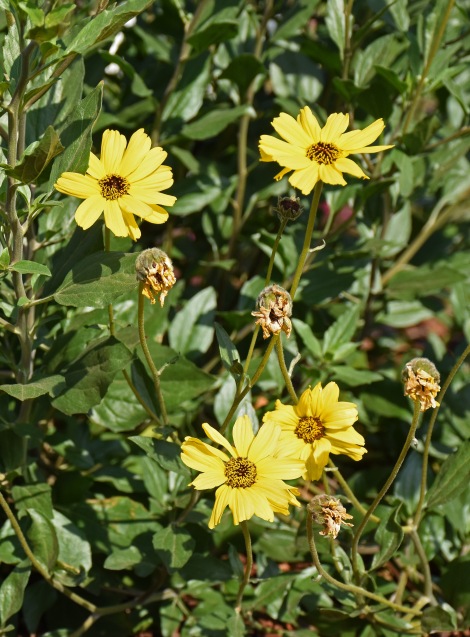
California bush sunflowers (Encelia californica) dazzling in the Spring sunshine.
Evergreen coyote brush is especially useful to lessen the impact of summer dormant/semi-dormant natives. And that was my plan. In my front yard I’ve planted three California bush sunflowers (Encelia californica). In Spring they were gorgeous – lush green leaves and bright cheerful yellow flowers. But as summer heats up they start getting ragged. Modest summer water can help, but they can look pretty grim.

Newly planted ‘Twin Peak #2’ coyote brush, a prostrate form of coyote brush.
Knowing that, my plan was to have evergreen plants around them. Two Cleveland sage (Salvia clevelandii) hybrids – ‘Allen Chickering’ and ‘Celestial Blue’ – are intersperse with them. Behind them two larger bushes – Louis Edmunds manzanita (Arctostaphylos bakeri ‘Louis Edmunds’) and Nevin’s barberry (Berberis nevinii) – will be the focus of the summer yard. And bordering the sidewalk will be a row of coyote brush creating an informal hedge.
But, alas, the new plantings are less than a year old. The sunflowers took off like rockets and looked dazzling in the Spring, but started becoming scraggily as they enter dormancy. The sages got a good start and had beautiful blue and purple flowers standing out from their grey-white leaves, yet are still a couple of years from their full size. The manzanita and barberry will take even longer to be able to rise above the sunflowers. And the coyote brush… >sigh< Oh, my poor, poor, poor coyote brush.

A prostrate form of coyote brush planted along the walking trails in Kenneth Hahn park. With its dense green foliage and its tolerance to be regularly sheared, coyote brush can make a great garden plant.
I had planted six coyote brushes along the sidewalk, a few feet away from the edge. The regular species of coyote brush would get too big for this purpose, so I chose one of the prostrate cultivars. The two most common cultivars are ‘Pigeon Point’ and ‘Twin Peaks #2.’ And yes, there is a ‘Twin Peaks #1.’ I’ve never seen it for sale or grown. I’ve only seen it listed in the Theodore Payne Native Plant Library and it offers no clues to how #1 and #2 differ (nevertheless, it is a great resource for California native plants).
At my last house I planted coyote brush ‘Pigeon Point’. This cultivar gets six to eight feet wide and up to two feet high. It did fantastic in my yard but someone forgot to tell it it was suppose to stop at two feet high and grew to almost five feet high and eight feet wide. Coyote brush is a plant that can handle shearing so I could have maintained it at 2 feet high but really had no reason to. It was just a big happy guy.
At my new home though I needed it to stay low and not get as wide. So I tried ‘Twin Peaks #2,’ which is listed as reaching one foot high and three to five feet wide. So last February I planted a row of six, each five feet apart. They started growing immediately. Spring was mild with good amount of rain in March. By early summer, each plant was about one and a half to two feet wide and appeared to be thriving. Overall the front yard was doing great.

Coyote brush blooms prolifically during the Autumn. Plants are female or male. The white flowers are female, the yellow ones, male.
Coyote brush is dioecious, meaning there are male plants and female plants. The flowers are both plants are small and not very showy, lacking petals. Male flowers are a pale greenish yellow and the females look like little white tufts of hair. While individually they’re not very noticable, a hillside of coyote brush in bloom become like a camaflogue pattern of dark green, greenish yellow and white.
The female produce little black seeds with a tuft of white hair, waiting for a breeze to come and carry them away. In a garden this is messy, so most cultivars of coyote brush are male. However, having their seeds carried away on the wind helps them colonize recently disturbed habitats. It also resulted in some people considering them to be weeds. Of course, coyote brush may consider us the weeds.
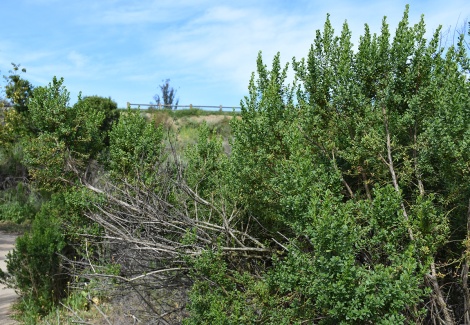
In the wild it is common to see coyote brush with bare branches. Most years coyote brush stays green year around, but during periods of long drought, plants will have branch dieback, letting some branches die off so the plant can conserve resources. This survival practice can be seen among some other native California plants such as manzanita (Arctostaphylos species).
Early summer stayed mild and my coyote brushes continued to grow. My family and I were getting ready for a two week vacation. I had the yard on a drip system, scheduled to be watered every two weeks. My irrigation system had an app (what doesn’t!?) so I could monitor and adjust it while I was away.
The weather stayed mild into early July, temperatures reaching high 70’s to low 80’s, cool marine air blowing in each afternoon. But on the last weekend while we were away came a fast and furious heat wave. Within two days, the temperature jumped up to 110 degrees, which for coastal California is abnormal. I was a little nervous, but thanks to my irrigation app and weather app, I know the heat was coming and had the plants watered the day before the heat wave.

A gardener’s worse fear when coming back from vacation – dead plants.
I was worried about the seaside daisies, yarrow, and hummingbird sage, plants less tolerant of heat. But the coyote brush, not a worry. Those things are tough little bastards. Yet when I came home the only dead plants in my front yard were the coyote brush. Two were completely brown and crispy dry. The rest were looking pretty grim themselves. The leaves became a yellowish green and felt dry to the touch. Over the course of the summer, three more turned brown and died.
It is important to remember drought tolerant plants are not drought tolerant for two to three years. Getting them established can be a bit of an art.

This wild coyote brush sapling, perhaps a year old, had no significant water from the end of March to late October when a quarter inch of rain fell. Yet, despite growing in full sun, it still lives. While this sapling is much smaller than the potted coyote brushes I planted, it likely has a far more extensive root system.
Even in the wild, drought tolerant plants need a good wet year to get started and survive. Still the majority of seedlings will die before summer hits its peak. When I come upon a sprite, green youngling in September I have nothing but respect for it.
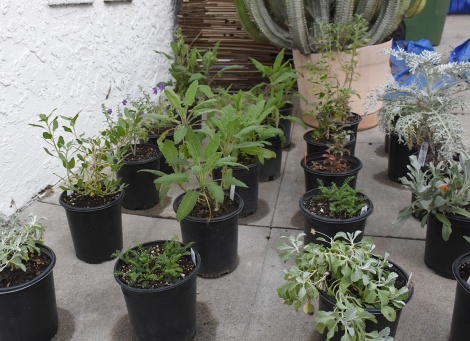
A bunch of spoil babies waiting to be planted. Despite not being put into the ground till late Winter many of these survived the July heat wave quite well. The surprise was it was the coyote brush that didn’t make it.
But potted plants from the nursery? Pampered little babies. Nice, loose soil that drains quickly, plenty of water and nutrients, grown in filtered sunlight. Pull those little ones out of the pot, plop them in a barren hole with the unrelenting sun and they are in for a hell of a transition. And so was the case for my Twin Peaks #2 coyote brushes.
(Don’t worry, I didn’t really just plop the coyote brush into the ground. On how to plant California natives, see this Planting Guide from the Theodore Payne Foundation.)
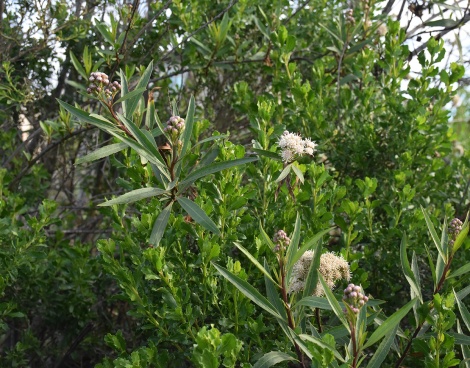
Coyote brush and mulefat (Baccharis salicifolia). Although both are from the same genus, they appear quite different – coyote brush having small serrated leaves and mulefat have long willow-like leaves. Yet their small, petalless flowers (blooming on the mulefat above) show the relation. There are over 500 species in the Baccharis genus found throughout the Americas.
Ultimately the problem with the coyote brush came down to the root systems. Ideally most California natives should be planted mid to late Fall. This maximizes the growing season for the new plants. The days are shorter with the sun is lower in the sky. The soil stays cooler and with the rains (or the garden hose in dry years), it holds onto the moisture longer. Some plants will quickly grow while others may hardly grow at all. Don’t worry, if they look healthy, be assured their roots are expanding in the moist soil. Once the roots are established, the above ground portion will start growing faster.
However, with all the craziness of moving into a new home, I wasn’t ready to plant till February so the new plants’ roots weren’t able to get as deep in the soil and were mainly concentrated in the potting soil. When a potted plant is first put in the ground it’s as if it was simply put into another pot. The moisture and nutrients in the surrounding soil is inaccessible to the new plant. This is especially true if the soil is hard clay. Which is exactly what I have.

Coyote brush, take two. Coyote brush is a good choice for yards with clay soil.
Tell a gardener your soil is clay, they’ll give you a look of pity and offer condolences. Some people will swear you can’t grow anything in clay despite the fact plants grow in clay around the world. Most places where I’ve garden have had clay soil, so I’m not so phased by it. Still it has it challenges.
For a plant grown in loose, penetrable potting soil, it takes a lot of effort for their roots to penetrate the clay. Digging in dry clay soil is only a slight bit better than digging on a rock. Clay that is too wet becomes a sticky, gunky mess that can suffocate any roots. Overwatered clay soil takes a long time to dry out, increasing the chance of the roots rotting. But with the right amount of moisture, clay has the advantage of drying out slower than most types of soil. Even if the top is dry and hard, inches below can be moist.
In the cool seasons, finding that right balance of watering/not watering is not that hard. There is a large margin for error. Even if winter storms oversaturate the soil, most natives will be fine. For the Southern California native plant the mild winters and moist soil triggers rapid growth.

Coyote brush blooming the wild.
The problem comes with the heat. Warm wet soil is the perfect playground for fungi. In most of California, natives evolved with dry summers and aren’t able to defend themselves from the pathogen fungi triggered by warm moist soil. For many California native plants overwatering can be a bigger danger than underwatering. Interestingly, further inland, in the California deserts, most of the rain come from summer monsoons, so plants there have resistance to the moist and warm loving fungi.
Here comes the tricky part. Potting soil dries out much faster than clay. A newly planted plant could be surrounded by wet soil yet its roots are in the dry potting medium. Water the plant more? Sure, but too much and then the clay becomes oversaturated which can suffocates the roots that have penetrated it and trigger the fungi. Plus, if the potting soil is never allowed to dry, why would the roots even bother spreading out.
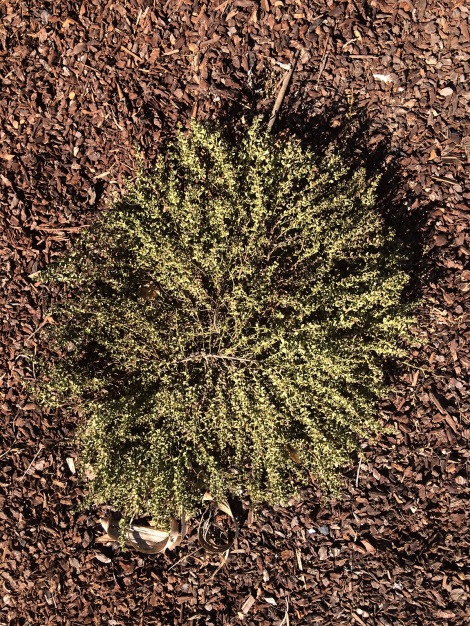
Will it survive? The last of the original coyote brushes appears on the edge, it leaves turn yellowish and brittle.
So now here’s my row of brown, dead coyote brush save for one sickly green one. The plants I was least worried about took the worse hit from the summer. What did them in?
My theory was when the heat wave hit, their root systems weren’t extensive enough yet and the plants all dried out. It probably didn’t help that they grew a lot since they were planted. The more leaf surface a plant has, the more evaporation it is subject to. New plants in the wild tend to be very small for the first few years putting most of their energy into the roots. My coyote brushes, which were almost two feet wide by summer, likely had a smaller root system than the little sprigs found growing wild.
It’s possible the brown ones could have come back when the return of cooler weather in the Fall. That would have required restraint. Now as a gardener, I often feel quite powerless when a plant isn’t doing well. And the plants don’t always make it obvious what’s wrong. So I water because that is something I can do! Right after the heat wave that would have been a good thing. But, because I needed to do something, I just up my water schedule for the coyote brush to a weekly deep soak. So, already distressed from the heat and not enough water, the plants were then overwatered. And one after another, the plants kept turning brown till only one sickly green one was left.
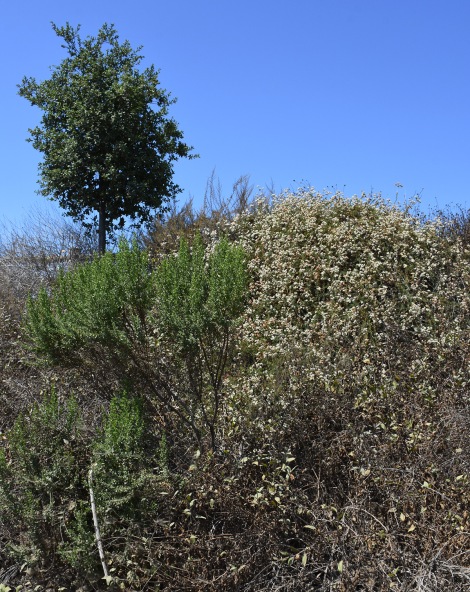
A hillside of California natives. A coast live oak (Quercus agrifolia) grows on the ridge top with California buckwheat (Eriogonum fasciculatum) blooming. In the foreground is a California bush sunflower (Encelia californica) in a dormant state with coyote brush growing between it and the buckwheat.
Of course, this all coincided with the California bush sunflowers going dormant. So the front half of my yard just looked dead. The one remaining coyote brush might croak any day. Still the leaves hadn’t turn brown and the smaller branches are still green. It took effort, but I cut back on watering it.
While holding onto hope for last survivor, it was time to replace the dead ones. Given my success with coyote brush in my last yard which was a half mile away and had similar soil and exposure, I decided to still plant coyote brush. But when replacing a dead plant, it is good to double check the plants requirements – soil type, sun exposure, watering needs. In planting a garden, sometimes wishful thinking can lead to certain facts being some how overlooked. But coyote brush ‘Twin Peaks #2’ requirements match my yard – clay ✔️, full sun ✔️, low water ✔️.
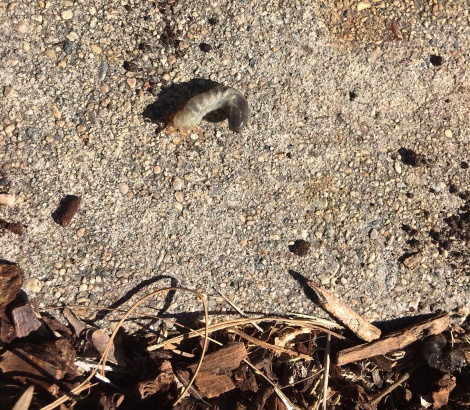
Grubs are just gross. Most, but not all, native plants aren’t bother by grubs but in the case of the distressed coyote brushes, they may have helped finish them off.
As I dug up the old plants, several showed signs of overwatering. They were easily pulled out with only a few short roots indicating rotting. In digging up one plant, I found a large number of grubs in the soil. Grubs are insect larva, usually from beetles, that live underground and often feed on roots. Could this have been the problem? The plant next to it also had some grubs in the soil, but far fewer. The other three had no grubs. In my plant guides I haven’t seen grubs listed as a problem for coyote brush. So the grubs probably didn’t killed any of the coyote brush, but did take advantage of the stressed plants.
Coyote brush is actually a great plant for wildlife, providing food and shelter for a wide variety of insects, but rarely is that ever a problem for a healthy plant. Galls are often found on plants but do no serious damage. If it appears people have been spitting on your coyote brush, more likely spittle bugs have whipped up a bubbly froth of sap to provide protection for developing larva. In my old garden, there was always some interesting critter to be found on my coyote brush. Since coyote brush doesn’t flower till late in the year when few other plants are in bloom, they provide important food for a wide variety of pollinators. Of course, all those insects provide food for larger animals such as birds and lizards. But don’t worry, coyote brush does not attract coyotes.
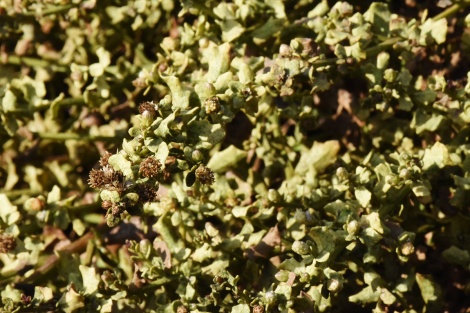
The surviving coyote brush, despite it dry, damaged leaves was able to still produce flowers as summer ended. With the cooler weather arriving, I hope (and believe!) it will start growing new leaves.
So the new plants have been planted as the growing season begins. As for the last surviving coyote brush, while it hasn’t produce any new leaves yet, it has managed to produce some new flowers. They are not much to look at, even for a coyote brush, brown and smaller than normal. The flowers though do indicate that plant is very much alive. With this biological imperative taken care of and the days getting cooler, maybe now it can put energy into producing new leaves.

The newly planted coyote brushes. Hopefully, being in the ground through Autumn and Winter will let these ones build a more extensive root system. Meanwhile, the sunflowers behind them are leafing out again and my pumpkins are doing very nicely!
At the same time, the sunflower plants are getting new leaves and will hopefully have another wave of flowers before Winter. The sages, manzanita and barberry will also begin new growth. Though perhaps all this is happening too soon. My wife was complaining that the yard was looking like a spooky forest and with Halloween around the corner…
All photographs by Alan Starbuck
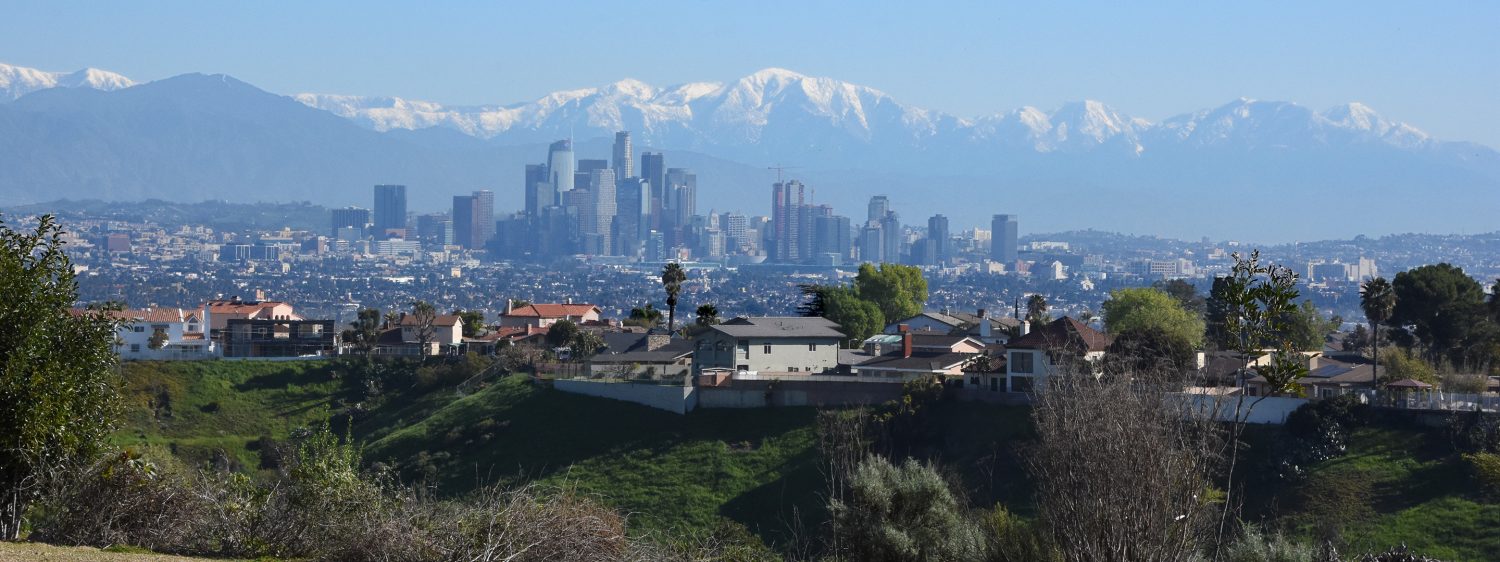
Well, you said it. They are not drought tolerant for the first few years. The second most common problem with them is that after those first few years, the rot easily if they continue to get watered like they were while getting established. Landscapers commonly continue to water them to death. As they deteriorate, gardeners respond by giving them more water!
LikeLiked by 1 person
With the coyote brush at my old home, once established I would water it maybe once or twice during the summer and it probably would have been fine without that. Of course, another challenge is sometimes a plant that is being overwatered can look similar to one being underwatered!
LikeLiked by 1 person
Yes, they both look the same. However, although opposite problems, the solution is the same. Give them more water.
LikeLiked by 1 person